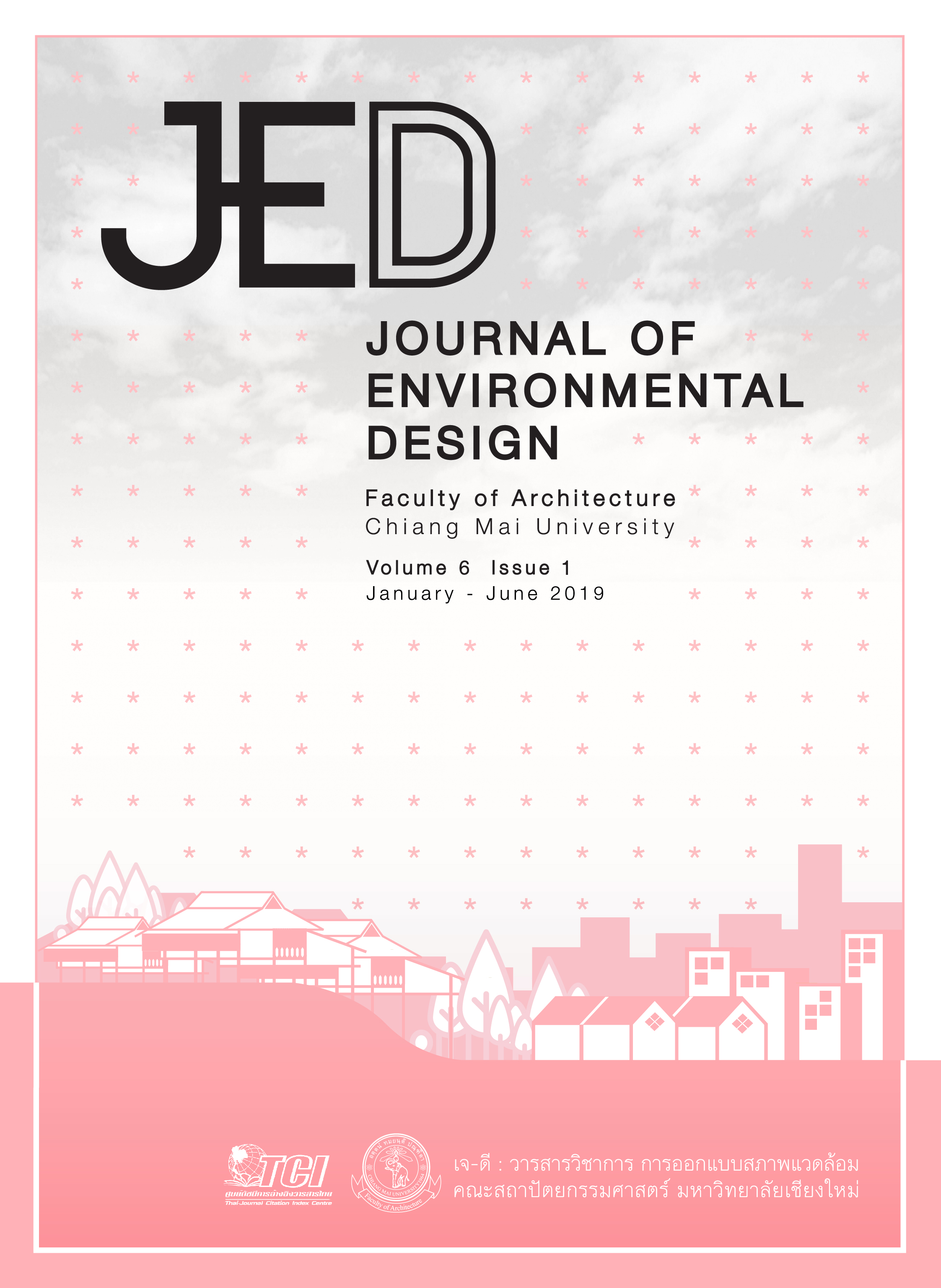The development of concrete masonry units by luffa cylindrica fiber
Main Article Content
Abstract
This article describes development of concrete masonry units made from luffa cylindrica fiber to be an environment–friendly material in order to promote the use of
agricultural material in architectural work. Chopped luffa cylindrica fiber was used as
admixture of concrete masonry units based on Thai Industrial Standard of Non–Load
Bearing Concrete Masonry Unit in type of non–moisture controlled units 58 – 1990. There were 5 mixture ratios by having prototype concrete masonry unit mixture of Portland
Cement Type I : sand : gravel = 1 : 3 : 5 by weight (kg.) with 10% of clean water by total mixture weight and then replaced gravel with luffa cylindrica fiber in ratios of 25, 50, 75 and 100 by weight. The concrete masonry units were casted in 10 x 10 x 10 cm3 cube steel molds in order to find out the maximum ratio of luffa cylindrica fiber used to replace gravel to produce concrete with the standard size of 70x190x390 mm with dimensional coordinate of 4/5 x 2 x 4 according to Thai Industrial Standard 58 – 1990. The research results showed that D formula with 75 grams of luffa cylindrica fiber replacement for gravel was the maximum ratio to give average density of 1237.95 kg./m3., compressive strength of 3.19 MPa, 0.044% of lengthwise shrinkage, 11.17% of water absorption and 0.132 W/m.K of
thermal conductivity. It could be concluded that luffa cylindrica fiber could be admixture of non–load bearing concrete masonry units which could be applied with architectural work as well.
Article Details
References
American National Standard. (2010). ASTM C518–10 Standards: test method for steady–state thermal transmission properties by means of the heat flow meter apparatus. New York: Clearance Center.
Dcon. (2018). Dcon cellular lightweight concrete. Retrieved October 7, 2018, from https://www.dconproduct.com/wp–content/uploads/2018/01/block59.pdf
Ekoblok. (2006). Test report thermal conductivity. Retrieved February 3, 2016, from https://www.ekoblok.co.th/img/guarantee_award/1_Thermal.pdf
Jirattapong, W. & Songthanasak, K. (2011). Karn sueksa pariman sellulos he mi sellulos lae liknin chak khong luea thing chak phuet phuea chai nai karn phalit phaen fim phlattik chiwaphap. (In Thai) [Study on cellulose, hemicellulose and lignin quantity from crop residues for bioplastic film production]. In Yamsaengsung, R. (Eds.). Proceeding of The 21st Thai Institute of Chemical Engineering and Applied Chemistry. (pp. es007–1 – es007–4). Songkla: Chemical Engineering , Faculty of Engineering , Prince of Songkla University.
Ministry of Energy. (2009). Ministry of Energy’s notification on criteria and calculation methods for building design of various systems, overall energy consumption of buildings and use of renewable energy of various building systems B.E. 2552. Bangkok: The Department of Alternative Energy Development and Efficiency.
Ministry of Industry. (1974). TIS Standards: standard for sample and testing concrete masonry units TIS 109–2517. Bangkok: Thai Industrial Standards Institute (TISI).
Ministry of Industry. (1985). TIS Standards: concrete aggregates TIS 566–2528. Bangkok: Thai Industrial Standards Institute (TISI).
Ministry of Industry.(1990). TIS Standards: standard for hollow non–load–bearing concrete masonry units TIS 58–2533. Bangkok: Thai Industrial Standards Institute (TISI).
Satyanarayana, K. G., Guimaraes, J. L. & Wypych, F. (2007). Studies on lignocellulosic fibers of Brazil. Part I: Source, production, morphology, properties and application. Composites Part A: Applied Science and Manufacturing, 38 (7), 1694–1709.
Seki, et al., (2012). Characterization of luffa cylindrical fibers and the effect of water aging on the mechanical properties of its composite with polyester. Journal of Applied Polymer Science, 123 (4), 2330–2337.


